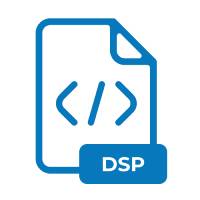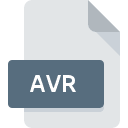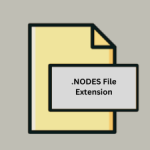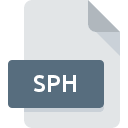.DSP File Extension

Dynamic Studio Professional Module
| Developer | N/A |
| Popularity | |
| Category | Audio Files |
| Format | .DSP |
| Cross Platform | Update Soon |
What is an DSP file?
.DSP file extension carries significance as it pertains to Dynamic Studio Professional (DSP) Modules. These files encapsulate critical information and configurations essential for audio processing, synthesis, or effects within a digital audio workstation (DAW) environment.
The .DSP extension denotes a structured file format employed to store parameters, algorithms, and settings used by audio processing plugins, software synthesizers, or digital signal processing (DSP) modules.
More Information.
The .DSP file extension was initially conceived to address the growing complexity of audio processing tasks within digital audio workstations.
With the advent of software-based signal processing, developers sought a standardized means to package and distribute custom audio processing algorithms and configurations.
Thus, the .DSP format served as a container for storing these configurations, allowing users to import, export, and share their preferred audio processing settings effortlessly.
Origin Of This File.
The origins of .DSP files trace back to the evolution of digital audio technology and the rise of computer-based music production.
As musicians and audio engineers sought more sophisticated tools to manipulate and enhance sound, the need for standardized file formats to encapsulate audio processing parameters became apparent.
Consequently, the .DSP extension emerged as a solution to streamline the exchange and interoperability of audio processing configurations across different software platforms and environments.
File Structure Technical Specification.
A typical .DSP file comprises a structured representation of audio processing parameters and settings, organized in a hierarchical format.
The specific structure and contents of a .DSP file may vary depending on the software platform or plugin architecture. Common elements often include:
- Parameter Definitions: Descriptive metadata specifying the purpose and behavior of each parameter within the audio processing module.
- Parameter Values: Numerical or categorical values representing the current settings of each parameter.
- Algorithm Definitions: Mathematical algorithms or processing routines utilized by the audio processing module to manipulate audio signals.
- Routing Information: Configuration data detailing how audio signals flow through the processing chain or network of modules.
- User Interface Layout: Instructions for rendering the graphical user interface (GUI) of the audio processing module within the DAW environment.
The technical specifications governing the .DSP file format may vary based on the implementation choices of individual software developers or plugin manufacturers. However, adherence to certain conventions and standards ensures compatibility and interoperability across different platforms and applications.
How to Convert the File?
Converting .DSP files to alternative formats or vice versa may be necessary to achieve compatibility with different software platforms or applications. Several methods and tools facilitate the conversion process, including:
- Plugin-Specific Export: Some audio processing plugins or software synthesizers offer built-in functionality to export .DSP configurations to other formats, such as XML or proprietary presets.
- Third-Party Conversion Utilities: Dedicated software tools or utilities designed for audio file conversion may support the transformation of .DSP files into compatible formats compatible with a wider range of applications.
- Manual Recreation: In cases where automated conversion tools are unavailable or ineffective, users may opt to manually recreate audio processing settings and parameters within their preferred software environment.
Before initiating the conversion process, users should ensure compatibility between the target format and the intended destination application or platform to avoid potential data loss or format incompatibilities.
Advantages And Disadvantages.
Advantages:
- Portability: .DSP files enable users to transfer audio processing configurations seamlessly between different digital audio workstations and software environments.
- Customization: Users can tailor audio processing parameters and settings to suit their specific preferences and requirements, thereby facilitating creativity and experimentation.
- Interoperability: Standardization of the .DSP format fosters compatibility and interoperability among various audio processing plugins and software synthesizers.
- Ease of Distribution: Developers can distribute custom audio processing algorithms and presets in the form of .DSP files, simplifying the sharing and dissemination of innovative sound processing techniques.
Disadvantages:
- Compatibility Issues: Despite efforts to standardize the .DSP format, compatibility issues may arise when importing .DSP files into DAWs or software environments with divergent implementation details.
- Limited Extensibility: The .DSP format may lack support for advanced features or functionalities available in newer audio processing technologies, limiting its applicability in certain contexts.
- Dependency on Vendor Support: Users may encounter challenges when attempting to utilize .DSP files created by plugins or software synthesizers that are no longer supported or maintained by their respective vendors.
How to Open DSP?
Open In Windows
- Digital Audio Workstations (DAWs): Use popular DAWs like Ableton Live, FL Studio, or Reaper, which support .DSP files. Simply launch the software, and either drag and drop the .DSP file into the workspace or use the import function within the software to load the file.
- Audio Processing Plugins: If the .DSP file is associated with a specific audio plugin, open a compatible audio editing software like Audacity or Adobe Audition, and load the plugin. Then, import the .DSP file through the plugin’s interface.
Open In Linux
- DAWs: Linux-compatible DAWs such as Ardour or Qtractor can handle .DSP files. Launch the DAW, and follow similar steps as in Windows to import or open the .DSP file.
- Wine Compatibility: Alternatively, if a Windows-based DAW is preferred, consider using Wine, a compatibility layer that allows running Windows applications on Linux. Install Wine, then install and run the desired Windows DAW to open .DSP files.
Open In MAC
- DAWs: macOS supports popular DAWs like Logic Pro X, GarageBand, or Ableton Live. Launch the DAW, and import the .DSP file through the software’s interface.
- Audio Processing Plugins: Similarly, if the .DSP file corresponds to an audio plugin, open a compatible audio editing software like Audacity or Adobe Audition on macOS, and load the plugin. Then, import the .DSP file through the plugin’s interface.
Open In Android
Open In IOS
- DAWs: iOS offers DAW apps like GarageBand or Cubasis that can handle audio files. Launch the DAW app on your iOS device, and import the .DSP file following similar steps as in macOS.
- Audio Processing Plugins: Check if there are audio editing apps on the App Store that support third-party audio plugins. If such apps exist and support .DSP plugins, you can load the .DSP file through the plugin’s interface within the app.













